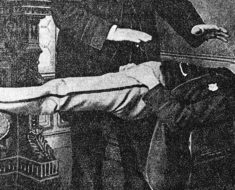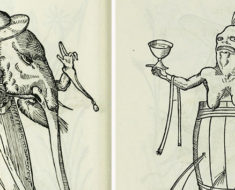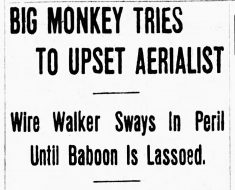Madagascar is home to many unusual creatures, like satanic leaf-tailed geckos, aye-ayes, giant jumping rats, and leaf bug nymphs. But for many years, the strangest form of life on the island was believed to be a tree that ate people.
It all started with a New York World article published on April 28, 1874. The story went into great detail about the tree and the primitive Mkodos tribe that worshipped it, as described in a letter written to Dr. Omelius Fredlowski by the hungry plant’s discoverer, Carl Leche.
The Mkodos reportedly lived in caves, wore no clothes and had no religion beyond “that of the awful reverence which they pay to the sacred tree.” And they were all short—none stood taller than 56 inches.
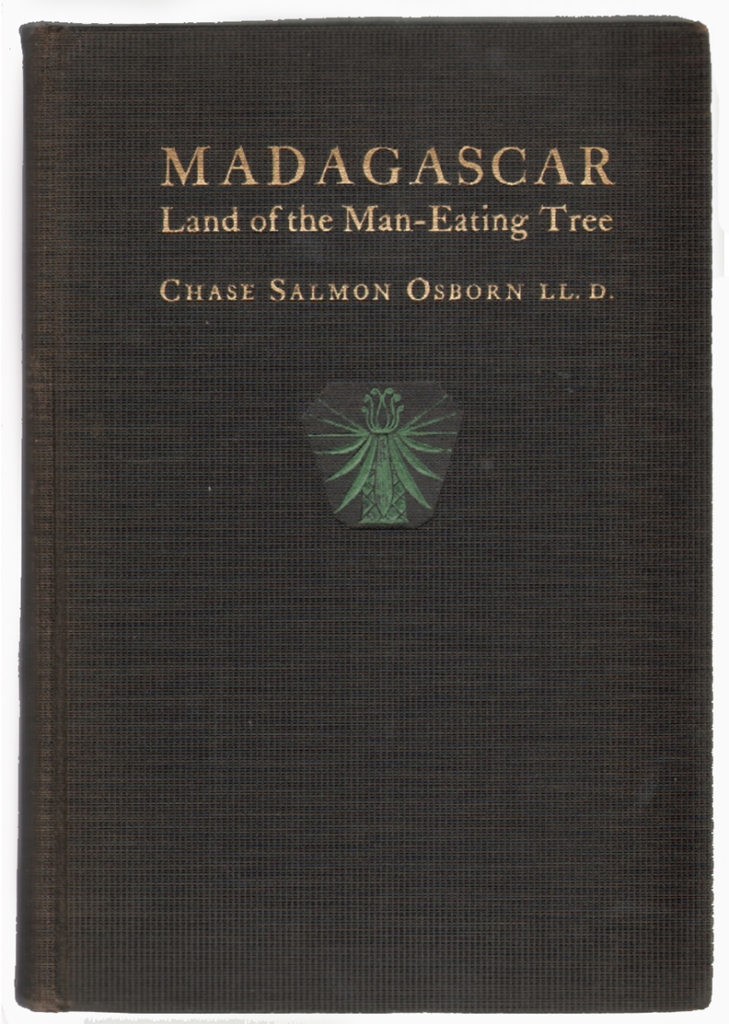
This 1924 book by Chase Salmon Osborn recounts the original New York World story and reignites interest in the tree.
Leche found the man-eating tree near the bend in a stream and vividly described it as such:
If you can imagine a pineapple, eight feet high and thick in proportion, resting upon its base, and denuded of leaves, you will have a good idea of the trunk of the tree, … From the apex of this truncated cone (at least two feet in diameter) eight leaves hung sheer to the ground, like doors slung back on their hinges. These leaves, which were joined at the top of the tree at regular intervals, were about eleven or twelve feet long, and shaped very much like the American agave or century plant. They were two feet through the thickest part and three feet wide, tapering to a sharp point that looked like a cow’s horn, very convex on the outer surface and on the inner surface, slightly concave. This concave face was thickly set with very strong thorny hooks, like those upon the head of the cone. These leaves, hanging thus limp and lifeless, dead green in color, had in appearance the massive strength of oak fibre. The apex of the cone was a round, white, concave figure, like a small plate set within a smaller one. This was not a flower, but a receptacle, and there exuded into it a clear, treacly liquid, honey-sweet, and possessed of violent intoxicating soporific properties. From underneath the rim, so to speak, of the undermost plate, a series of long, hairy, green tendrils stretched in every direction towards the horizon. These were about seven or eight feet long each and tapered from four inches to a half inch in diameter, yet they stretched out stiffly as iron rods. Above these, from between the upper and under cup, six white, almost transparent, palpi reared themselves, towards the sky, twirling and twisting with a marvelous incessant motion, yet constantly reaching upward. Thin as reeds and frail as quills apparently, they were yet five or six feet tall, and were so constantly and vigorously in motion, with such a subtle, sinuous, silent throbbing against the air, that they made me shudder, in spite of myself, with their suggestion of serpents flayed, yet dancing on their tails.”
The explorer claimed his observation was cut short by natives shrieking wildly around the tree. But the interruption gave him the opportunity to witness an eating ritual. Leche wrote that the tribe surrounded a woman and, using javelins, forced her to climb to the top of the tree, where she became dinner:
“The slender, delicate palpi, with the fury of starved serpents, quivered a moment over her head, then, as if by instinct with demoniac intelligence, fastened upon her in sudden coils round and round her neck and arms. Then, while her awful screams. and yet more awful laughter, rose wilder, to be instantly strangled down again into a gurgling mean, the tendrils, one after another, like great green serpents, with brutal energy and infernal rapidity rose, retracted themselves, and wrapped her about in fold after fold, ever tightening, with the cruel swiftness and savage tenacity of anacondas fastening upon their prey.”
Leche was horrified at the sacrifice. “May I never see such a sight again!” he wrote. Still, he continued to make notes and found a smaller tree that caught and ate a lemur.
For the next fourteen years, Leche’s description was widely believed until a publication called Current Literature exposed the story to be pure fiction, written by a reporter named Edmund Spencer. Carl Leche, Dr. Fredlowski and the Mkodos tribe were figments of his imagination. And despite the existence of carnivorous plants, like Venus flytraps, no plants eat humans.
Yet not everyone read Current Literature, and some explorers continued spending time on Madagascar searching for the mysterious tree.
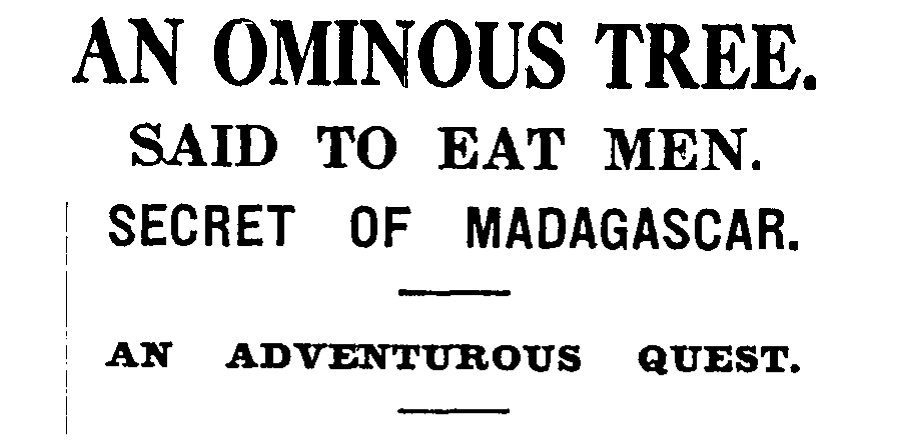
Headline from the Auckland Star, January 17, 1933.
A 1933 article reported that a group of adventurers—including a botanist, a mineralogist, a scientist—would be led by a former military man, Captain L. R. de la Hurst, on a private expedition to find the tree.
“I can tell you this,” Hurst said, “it does eat human beings. It is kept a very close secret and natives are not too keen on pointing out the locality. Chiefs have told me that sacrifices are periodically offered to the tree. I hope, if possible, to take cinema pictures of the actual ceremony.”
They found nothing. But at least they came back uneaten.

